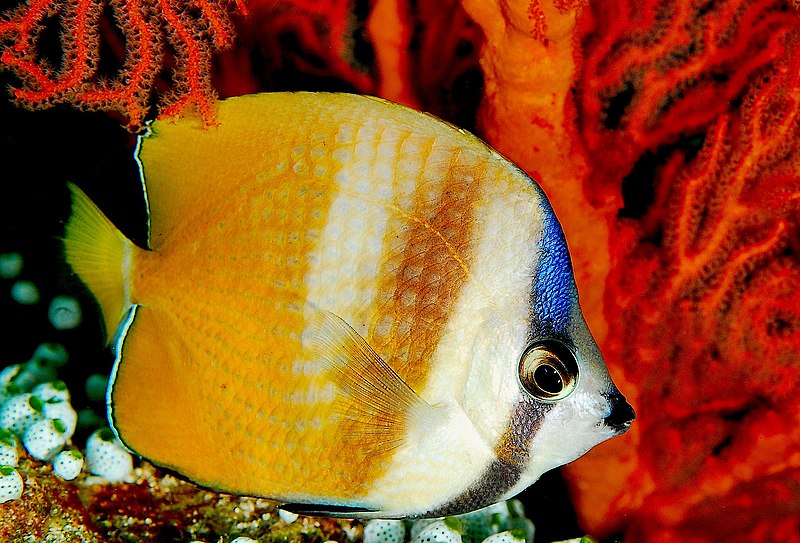Aquarium fish need three basic things to keep them happy and healthy in a captive environment: clean water, consistent temperature, and proper food. The first two things are generally easy to provide with regular maintenance and reliable equipment, but it seems something as simple as feeding some fish can be rather difficult at times. What to feed, how to feed, and how much or often to feed can vary by species. Even if you know the answers to these questions, there are some species of fish out there that will not eat the food you offer. After years of working directly with this issue, I have come up with a few tricks to get stubborn fish to eat.
Take the Bait
Many fish are predators so they’re looking for a moving target. One way to entice them to food is to lure them to the food as if you’re fishing. Use a clear feeding stick and put the food on the tip of the stick. Move the food around the tank near head of the fish you’re trying to feed, without making any sudden motions. Hopefully they will take the bait. In some other cases, moving the food just in front of the predator’s mouth, and slowly moving it away, will cause them to strike before their “prey” escapes. This method often works best if the food has been supplemented with Garlic Guard. If the fish doesn’t strike, try to research how it would normally strike it’s prey and try to simulate similar scenarios. If all else fails, tap them on the nose with the food. The fish may bite in aggression or defense and will end up with a mouthful of food. This trick is mostly used for large predators that will not eat or will only eat live food.
Four Day Cycle
When a fish only eats live and you want to acclimate it to frozen, put them on a four day cycle. Every day, offer some type of frozen food (usually using the bait technique above), but if they continue to refuse the food, give them some live food on the fourth day. Only give them enough to sustain them though, they are more likely to eat frozen food if they are hungry.
Conditional Training
This method is something I use most often for fish that hunt as adults, but may still be small in size and non-aggressive. The fish that comes to mind are the Mandarinfish. In many cases, they respond to live brine shrimp or live mysis shrimp, so that provides a good starting point. Using a syringe or a pipette, release the food in to the tank near the fish. Fish should recognize the live shrimp as food. After a month or two of doing this daily, continue to use the same syringe or pipette, but instead, fill it with frozen brine or mysis. Ideally, they start recognizing the syringe or pipette as a food source so they still eat what comes out of it without hesitation. This is, unfortunately, not 100% effective but it does help convincing fish of this nature to eat prepared food.
Popsicles
 Consider creating a tasty treat for saltwater fish such as butterflies and angels, that often graze on coral for their food. If they won’t take the frozen food while it is free floating, or they are not aggressive enough to get it before the other fish do, this can be a great food delivery system. Using a small branched piece of live rock or a coral skeleton, make a paste out of the food you want to offer. Here, we usually blend shrimp, scallop, algae, and mysis shrimp. Spread the paste on the live rock piece or coral skeleton and place it in the freezer. This provides food that looks very similar to their natural food items, so they are more likely to pick at it.
Consider creating a tasty treat for saltwater fish such as butterflies and angels, that often graze on coral for their food. If they won’t take the frozen food while it is free floating, or they are not aggressive enough to get it before the other fish do, this can be a great food delivery system. Using a small branched piece of live rock or a coral skeleton, make a paste out of the food you want to offer. Here, we usually blend shrimp, scallop, algae, and mysis shrimp. Spread the paste on the live rock piece or coral skeleton and place it in the freezer. This provides food that looks very similar to their natural food items, so they are more likely to pick at it.
Grow Your Own Algae Rocks
I recommend this method to customers with Tropheus tanks. Tropheus are algae grazers and eat the algae by scraping it off of rocks. Take a small container of aquarium water and put it in the window where it gets direct sunlight. Place some rocks in the container for algae to grow on. As the rocks become covered in algae, put one or two rocks in your tank for the Tropheus to feed on. Once they have cleaned the rocks, rotate them back in to the window container and place another algae covered rock or two in your tank. The number of rocks to rotate varies depending on the number of fish and the size of the tank. This works well for most fish that feed primarily on algae.
I hope some of these methods provide a few solutions to anyone who may be having trouble getting their fish to eat. I would love to learn of any methods any of you may use to get your fish eating.
Until next time,
Jason Tschudy
Moray Eel image referenced from wikipedia and originally posted by Michael Strock
Klein’s Butterflyfish image referenced from wikipedia and originally posted by Jenny Huang
 That Fish Blog – Aquarium Advice and Information
That Fish Blog – Aquarium Advice and Information
